How to Grow Papayas: A Step-by-Step Guide for Lush, Organic Fruit
- March 1, 2024
- 1 comment
Papayas, renowned for their sweet and tropical flavor, are more than just a delicious fruit; they also offer the possibility of a rewarding gardening experience. Cultivating papayas in your own garden allows you to witness the fascinating journey from seedling to fruit-bearing trees. This guide aims to provide an educational and comprehensive overview of the entire process, covering critical aspects such as choosing the right location, soil preparation, care and maintenance, and even pest management.

Nutritional Benefits of Papaya
| Benefit | Description |
|---|---|
| Rich in Nutrients | Papayas are a great source of Vitamin C, Vitamin A, folate, and fiber, essential for overall health. |
| Digestive Aid | Contains the enzyme papain, which aids in digestion and can help break down proteins. |
| Anti-inflammatory | The enzyme chymopapain and other compounds in papaya reduce inflammation in the body. |
| Skin Health | Vitamin A and papain in papaya contribute to skin health, helping in healing wounds and blemishes. |
| Heart Health | The fiber, potassium, and vitamins in papaya help protect against heart disease. |
| Boosts Immunity | High in Vitamin C, which is known for its immune-boosting properties. |
| Eye Health | Contains antioxidants like beta-carotene and Vitamin A which are beneficial for eye health. |
| Cancer Prevention | Contains antioxidants, phytochemicals, and flavonoids that may reduce the risk of certain cancers. |
| Anti-aging Properties | Rich in antioxidants which can help in reducing the visible signs of aging. |
| Helps in Weight Loss | Low in calories and high in fiber, making it a great choice for those looking to manage their weight. |
List on How to Grow Papayas
- Choosing a Location
- Planting Papaya Seeds
- Caring for Your Papaya Tree
- Harvesting Papayas
- Pest and Disease Management
Choosing a Location
Papayas thrive in warm climates and need plenty of sunlight. Select a sunny spot in your garden where the plant will receive at least 6 hours of sunlight a day. Papayas also prefer well-drained soil to prevent root rot.

- Climate Suitability: Papayas are tropical fruits, which means they grow best in warm and humid climates. They are sensitive to frost and cold temperatures, so they thrive in regions where temperatures typically don’t drop below 59°F (15°C). If you live in a cooler climate, consider growing papayas in a greenhouse or a well-protected area.
- Sunlight Requirements: Sunlight is a vital factor for papaya trees. They need full sun and should be placed in a location where they receive a minimum of 6 hours of direct sunlight daily. More sunlight typically leads to better growth and fruit production. However, in extremely hot climates, some afternoon shade can prevent overheating.
- Soil Conditions: The soil plays a significant role in the health of the papaya tree. Papayas prefer a soil pH between 5.5 and 7.0, which is slightly acidic to neutral. The soil should be rich in organic matter to provide nutrients and should have good drainage to prevent waterlogging. Poor drainage can lead to root rot, a common problem in papaya trees. To improve drainage, consider planting on a slight mound or in raised beds.
- Wind Protection: Papaya trees have a shallow root system and can be vulnerable to strong winds. Choosing a location that is somewhat sheltered from high winds or providing artificial windbreaks like fences or planting alongside other trees can help protect your papaya tree.
- Accessibility for Care and Harvest: Finally, choose a location that allows easy access for regular care—watering, fertilizing, pruning, and pest control—and for harvesting the fruits. Papaya trees can grow quite tall, so consider how you will access the fruit as the tree matures.
Planting Papaya Seeds
Seed Selection

- When selecting seeds for planting, it’s crucial to use fresh seeds from a fully ripe papaya. The ripeness of the fruit is a good indicator of the seed’s readiness to germinate.
- After extracting the seeds, clean them thoroughly to remove any fruit residue, which can hinder germination or lead to fungal growth.
- Dry the seeds for a few days in a shaded, well-ventilated area. This drying process helps to break the seed’s dormancy and prepares it for germination.
Soil Preparation
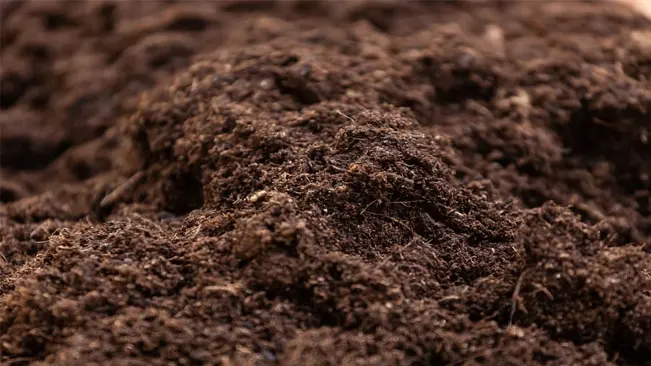
- Papayas require nutrient-rich, well-draining soil to thrive. Poor drainage can lead to root rot, which is detrimental to the plant.
- To prepare the soil, incorporate generous amounts of compost or well-rotted manure. These organic materials not only enrich the soil with nutrients but also improve its texture and drainage capability.
- Ensure the soil has a slightly acidic to neutral pH, as extreme soil pH can affect nutrient availability.
Planting
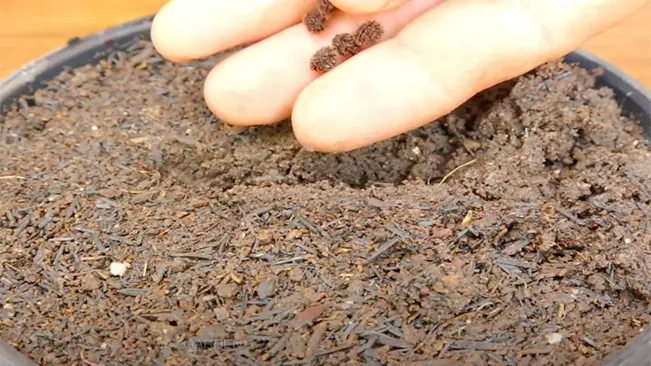
- Planting can be done directly in the ground or in large pots if space is limited or if you live in a region with colder climates.
- When planting in the ground, ensure that the site gets adequate sunlight and is protected from strong winds, as papayas can be quite sensitive to environmental stress.
- Sow the seeds about 1 inch deep in the soil. If planting multiple seeds, space them at least 8-10 feet apart because papaya trees can grow quite large and need enough space for root and canopy expansion.
- In the case of pot planting, choose a large pot with good drainage holes and use a similar soil mix as for ground planting. This allows for healthy root development.
Caring for Your Papaya Tree
Watering
- The watering needs of papaya trees change as they grow. Young saplings require consistent moisture to establish their root system. Water them deeply and regularly, allowing the top inch of soil to dry out slightly between waterings.
- As the tree matures, it becomes more drought-tolerant, so you can reduce the frequency of watering. However, during dry spells or extremely hot weather, it’s important to ensure that your papaya tree gets enough water. Over-watering can lead to root rot, so it’s crucial to ensure good soil drainage.
Fertilizing
- Papaya trees are heavy feeders and benefit from regular fertilization. Use a balanced, complete fertilizer that contains nitrogen, phosphorus, and potassium. You can also include micronutrients like magnesium and calcium, which are essential for papaya growth.
- Apply fertilizer every two weeks during the growing season, starting a few weeks after planting. Be cautious not to over-fertilize, as this can lead to rapid growth at the expense of fruit production. It’s also important to evenly distribute the fertilizer around the base of the tree and water it in well.
Pruning

- Papaya trees generally require minimal pruning. The main goal of pruning is to remove any dead or diseased leaves and branches, which helps in preventing the spread of diseases and pests.
- If your papaya tree is growing too tall, you can top it to encourage lateral growth and make fruit harvesting easier. However, this should be done cautiously as improper pruning can stress the tree and reduce fruit yield.
- Also, remove any suckers that grow at the base of the tree. These suckers can divert nutrients away from the main stem and reduce fruit production.
Harvesting Papayas

- Papayas are ready to harvest when they start to turn yellow. The fruit should be slightly soft to the touch. Harvest papayas using a sharp knife, cutting the stem close to the fruit.
Pest and Disease Management
Papayas can be susceptible to pests like aphids and diseases like powdery mildew. Use organic pesticides and fungicides as preventive measures. Regularly inspect your tree for signs of pests or disease.
Pest Management
Papaya trees can attract various pests, with aphids being one of the most common. Aphids are small, sap-sucking insects that can cause leaf curling and stunted growth. Besides aphids, papaya trees may also be vulnerable to spider mites, mealybugs, and fruit flies. To manage these pests:
- Regular Inspection: Frequently inspect your papaya tree for early signs of infestation, such as sticky residue on leaves (a sign of aphid activity) or webbing (indicative of spider mites).
- Natural Predators: Introduce or encourage natural predators in your garden, such as ladybugs and lacewings, which feed on aphids and other small pests.
- Organic Pesticides: Use organic insecticidal soaps or neem oil as a treatment. These are effective against a range of pests and are safer for the environment and beneficial insects.
Disease Management
Papaya trees can suffer from several diseases, with powdery mildew being a frequent issue. This fungal disease appears as a white powdery substance on leaves and can lead to leaf discoloration and reduced fruit yield. Other diseases include root rot, anthracnose, and papaya ringspot virus. To manage these diseases:
- Fungal Diseases: For powdery mildew, apply sulfur-based fungicides or baking soda solutions as a preventive measure. Ensure good air circulation around the plant to reduce humidity levels.
- Viral Diseases: For viral infections like papaya ringspot, control is challenging. Remove and destroy infected plants to prevent the spread. Use disease-resistant varieties when available.
- Soil Health: Prevent root rot by ensuring well-draining soil and avoiding over-watering. Healthy soil practices, such as adding compost, can also enhance the plant’s resistance to diseases.
- Sanitation: Keep the area around the papaya tree clean and free of debris where pests and diseases might harbor. Regularly remove any fallen fruits or dead leaves.
Conclusion
Growing papayas successfully requires understanding their needs for sunlight, soil, and consistent care. By providing them with ample sunlight, rich and well-draining soil, and regular watering, you can foster a healthy growth environment. Managing pests and diseases proactively through regular inspections and organic treatments is also crucial for maintaining the health of the papaya tree. With patience and attention to these details, you can enjoy the rewarding experience of nurturing a papaya tree from seed to fruit in your own garden.
FAQs (Frequently Asked Questions)
- Can papayas grow in pots?
Yes, papayas can be grown in large pots. Ensure the pot is big enough to accommodate the root system and has good drainage. - How long does it take for a papaya tree to bear fruit?
Typically, a papaya tree will start bearing fruit within 6 to 12 months after planting, depending on the variety and growing conditions. - Do I need multiple papaya trees to get fruit?
Papaya trees are self-pollinating if you have a hermaphrodite tree. However, having multiple trees including male and female plants can increase fruit yield. - What is the best time of year to plant papayas?
The best time to plant papayas is during the warmer months when there is no risk of frost. Papayas thrive in warm, tropical climates. - How much water does a papaya tree need?
Papaya trees require consistent moisture, especially in the early stages of growth. However, avoid waterlogging as this can lead to root rot. - What kind of fertilizer should I use for papayas?
A balanced, slow-release fertilizer is ideal for papaya trees. During the growing season, you can also use a higher nitrogen fertilizer to promote leaf growth. - How much sun does a papaya tree need?
Papaya trees need full sun and should receive at least 6 hours of direct sunlight each day. - Can I grow a papaya tree from a store-bought papaya seed?
Yes, you can grow a papaya tree from the seeds of a store-bought papaya. Just make sure the papaya is fully ripe and the seeds are properly dried before planting. - How do I protect my papaya tree from pests?
Regularly inspect your tree for pests and use organic pesticides when necessary. Natural predators like ladybugs can also help control aphid populations. - How do I know when to harvest papayas?
Papayas are ready to harvest when they start changing color from green to yellow and are slightly soft to the touch. The fruit should still be firm, with a bit of give.

Kristine Moore
Forestry AuthorI'm Kristine Moore, a seasoned garden landscaping professional with over 30 years of experience. My extensive career has been dedicated to transforming outdoor spaces into stunning, sustainable landscapes. With a deep understanding of horticulture, design principles, and environmental stewardship, I have become a respected figure in the field, known for creating harmonious, visually appealing, and eco-friendly gardens. My commitment to excellence and continuous learning in landscaping trends and techniques has solidified my reputation as an expert in garden design and implementation.





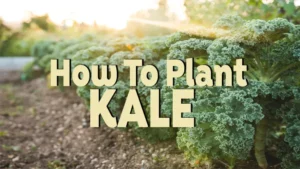
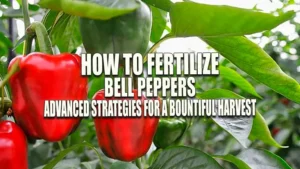
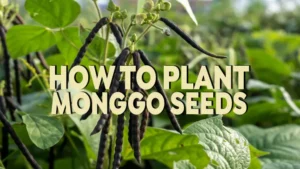


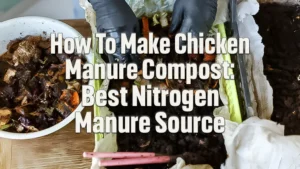


Great article. I came not knowing a single thing and now I think I understand how to plant a papaya. What more could I want? ⭐️⭐️⭐️⭐️⭐️
David Duffield
March 18, 2024 5:40 pm